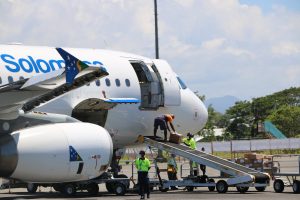The Australian government is set to spend half a billion dollars on an “advance purchase” of COVID-19 vaccines to help important neighbors in Southeast Asia and the Pacific recover from the pandemic.
On October 31, Foreign Minister Marise Payne announced that Australia plans to spend an additional $500 million on COVID-19 vaccines, as well as the support needed to administer them effectively. The purchases will be made from a range of manufacturers via the global COVAX Facility scheme, which aims to ensure designed to secure rapid and fair global access to COVID-19 vaccines. The tranche of funding comes on top of the $23.2 million already committed.
“The Indo-Pacific region is the engine of the new global economy,” Payne said in a statement. “Ensuring it can recover quickly will stimulate economic activity and restore jobs at home and abroad.”
The plan will be rolled out over three years to help countries in Southeast Asia and the Pacific achieve “full immunization coverage.” The money will be used to distribute millions of COVID-19 vaccine doses to countries across the region, as well as providing technical support to local health authorities. “A fast, safe vaccine rollout in the Pacific and Southeast Asia will mean we are able to return to more normal travel, tourism and trade with our key partners in the region,” Payne said.
The Australian pledge comes amid its growing consternation about China’s inroads in Southeast Asia and the Pacific, regions where Canberra has traditionally claimed a leadership role. In recent months, China has stepped up its “vaccine diplomacy” in Southeast Asia, offering a number of nations priority access to any potential COVID-19 vaccine. Of late, Beijing has also made significant economic inroads in Pacific island nations, prompting the government of Prime Minister Scott Morrison to announce its “Pacific step-up,” designed to neutralize Beijing’s influence in the dispersed island region.
In last month’s national budget, the Morrison government also committed $304.7 million in new funding over two years for Pacific Island countries and Timor-Leste, to help them cope with the economic impact of COVID-19. In late August, the Australian government also announced an $58 million injection into the COVAX vaccine scheme, intended to ensure access to vaccines for Indonesia, Cambodia, Laos, Myanmar, The Philippines, Timor-Leste and Vietnam, in addition to eight Pacific Island nations. In total, Australia has committed $123.2 million to the COVAX Facility, according to the Department of Foreign Affairs and Trade.
The Australian commitment extends beyond COVID-19-related support. Last month, The Age reported last month that Australia is in the process of finalizing a Southeast Asian aid package worth hundreds of millions of dollars over four years. The proposed funding will focus on the five nations of mainland Southeast Asia, and will include measures to ameliorate the impact of China’s cascade of 11 hydropower dams on the upper Mekong, which have been accused of exacerbating drought conditions downstream.
Taken together, these pledges indicate that funding commitments are beginning to catch up with Canberra’s growing trepidation about the spread of Chinese influence in Southeast Asia and the Pacific. For the nations in these two regions, the Australian funding increases the likelihood that they will gain access to a viable COVID-19 vaccine once it has been isolated, a crucial precondition of prosperity in a post-pandemic world. As I have argued in these pages before, sitting at the center of growing strategic competition is undeniably risky for many small nations of Southeast Asia and the Pacific – but there are benefits, too.

































